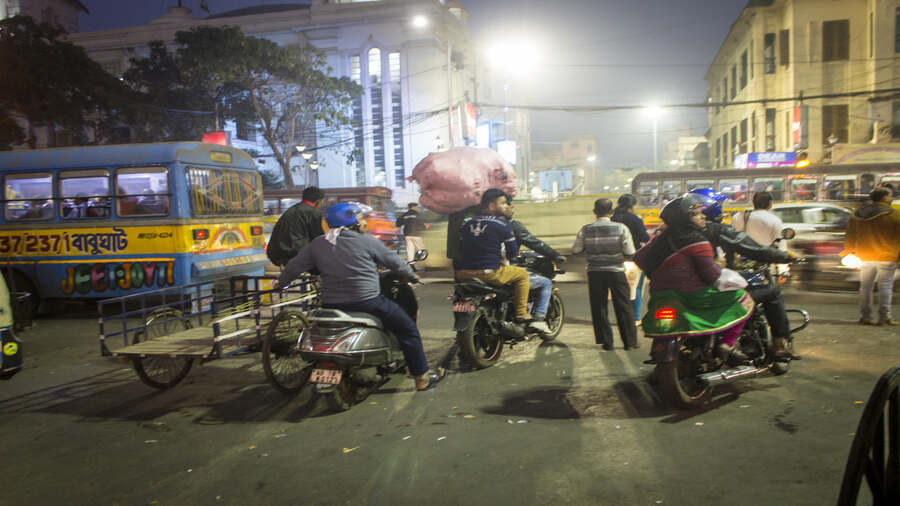The majority of the traffic signals, excluding a few around schools, will run automatically in a prefixed loop, Lalbazar has told the 25 traffic guards in the city.
Some of the signals have already shifted to the automatic mode.
The wait at a traffic light should be between 25 and 30 seconds, depending on the time of the day and the vehicular load at the intersection, a traffic officer said.
The wait will be longer at signals with multiple intersecting roads, such as the Shyambazar and Park Circus crossings.
The intervals for each intersection were apparently decided based on images captured on cameras there and with inputs from traffic police.
“We have been analysing camera feeds on the density of vehicles at all vital intersections at different times of the day for some time before working out the cycle timings for automatic mode traffic signal controls,” said Sunil Kumar Yadav, the deputy commissioner of police responsible for the city’s traffic.
“We have divided a day into five phases — pre-morning, peak hours, post-peak, a period of lull and night — to understand the flow pattern of traffic and have accordingly worked out the signal cycle timings.”
Cycle timing basically means the time required for a traffic signal to go green to green.
Senior officials from the police’s planning and survey section said a team had been scanning camera feeds from close to 500 traffic signals for weeks to read how far vehicles would line up at major intersections at different times of the day and how long it took for the last vehicle to cross the signal.
“We have, for instance, observed that at an intersection without a heavy density of vehicles, the cycle time can be completed within 30 seconds. A signal can be put on blink mode instead of being governed manually,” said a senior member of the team.
“At night, the cycle time of traffic signals at some of the busy junctions can be brought down to 20 seconds.”
The shift to complete auto-mode of traffic signalling — instead of the earlier model of a mix of auto and manual mode — has left a section of officers more burdened to ensure that traffic disorderliness was reduced.
“Each one of us has to now closely observe how this shift to auto mode is playing out on the streets while performing our usual duties,” said a senior officer of Tollygunge traffic guard.
